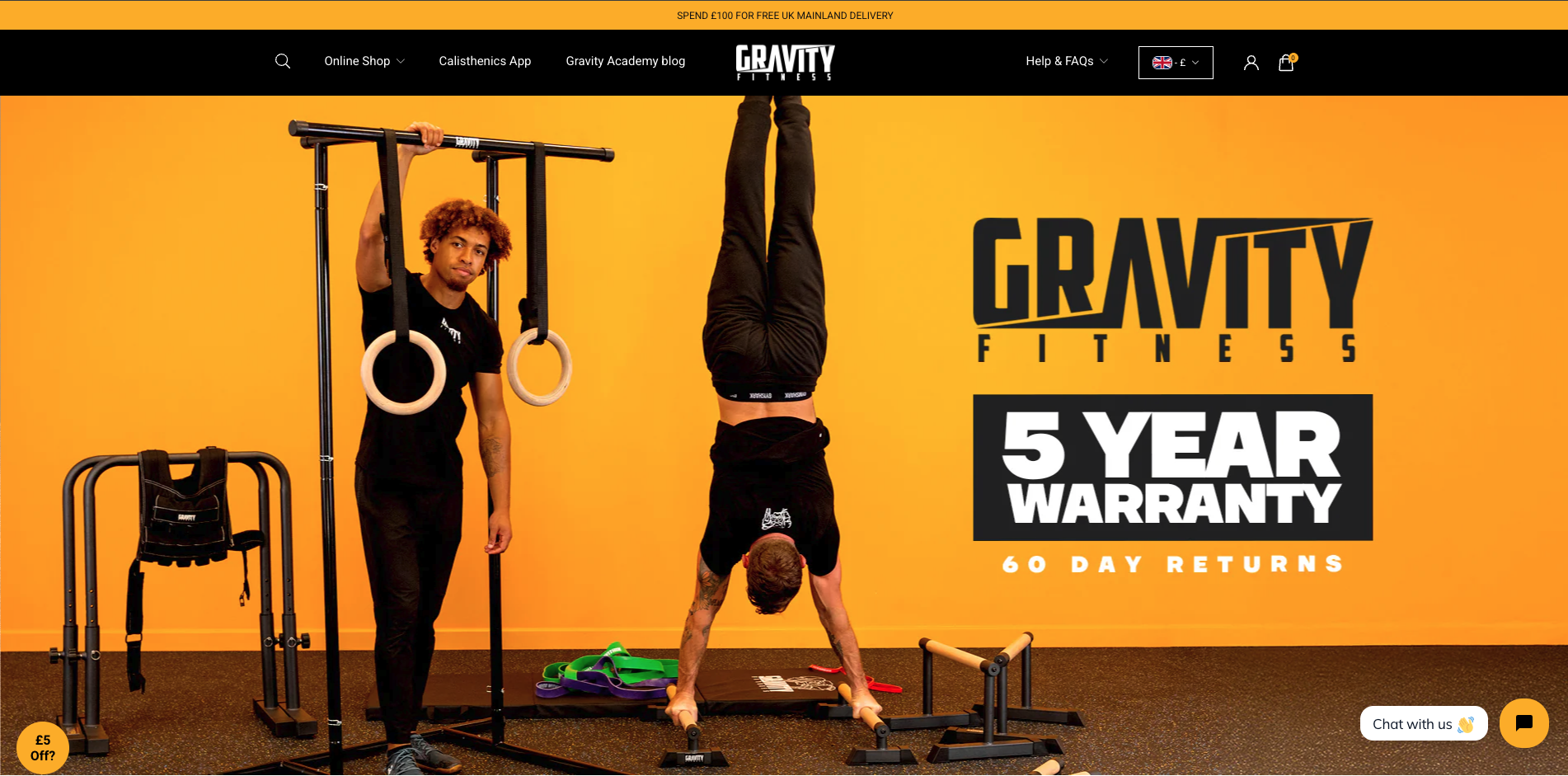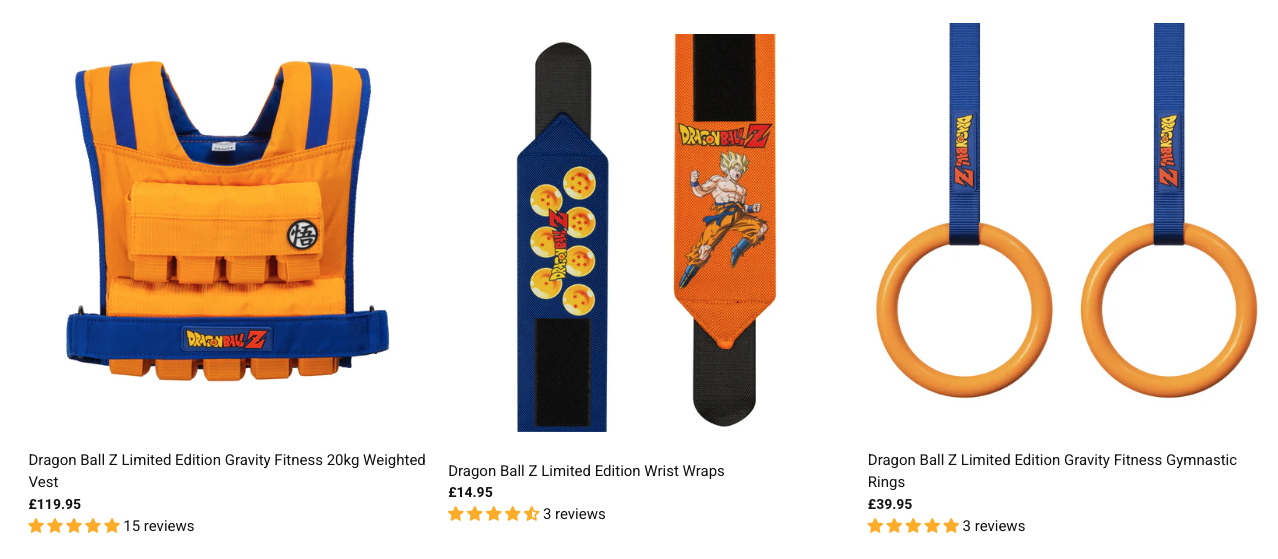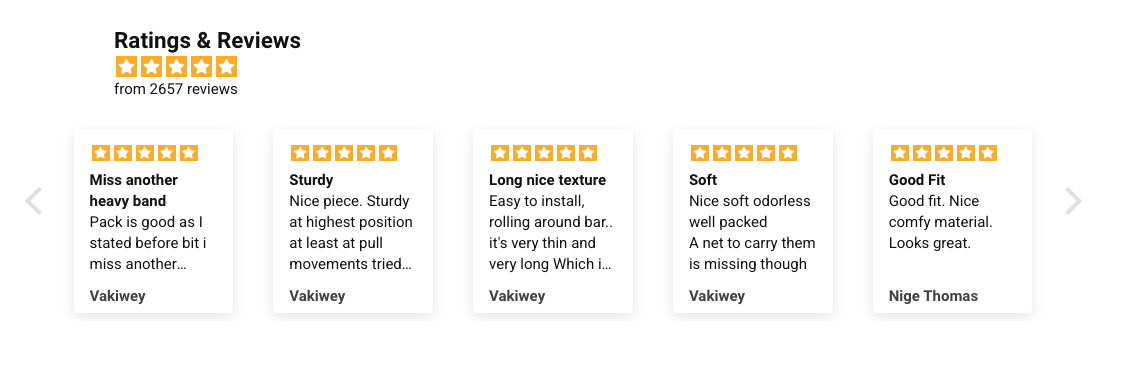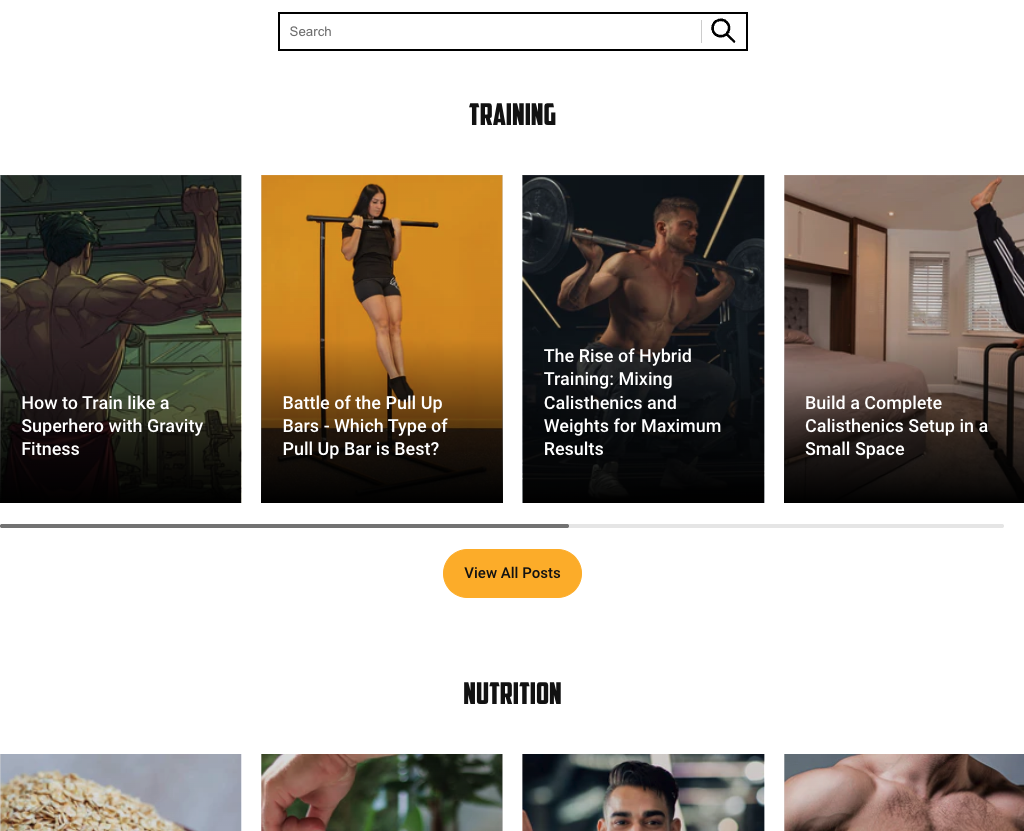Introduction
Home fitness growth isn’t slowing down. The global at‑home fitness equipment market is valued at US$10.11 billion in 2025 and is expected to hit US$20.56 billion by 2034, growing at around 8.21% per year.
In the UK, the wider gym and fitness market stands at US$7.2 billion (2024) and is projected to reach US$8.9 billion by 2033. Membership increased 6.1% in 2024, reaching 11.5 million members.
Despite the AI boom, search remains king – 95% of Americans still use search engines monthly, and AI adoption (21% heavy users) hasn’t cannibalised search. Heavy AI users search more. In the last 6 months, we’ve reported a 6% rise in organic visibility for the online fitness equipment sector (Feb–Aug 2025) and ranked 100+ brands by organic traffic score.
To find a standout, we reviewed the top 50 sites by visibility, YoY change, and share‑of‑voice. We manually examined each site’s UX, content, conversion funnel, and storytelling to unearth something genuinely interesting.
Gravity Fitness is a callisthenics-focused brand with 191% YoY monthly organic traffic growth. They stood out.
Click here to read our latest fitness equipment report analysing 100+ leading brands.

Fitness Industry Context
The home‑gym boom continues to be fuelled by health awareness, time‑poor consumers and technological innovation.
Search demand remains robust. General terms like “gym equipment” still generate tens of thousands of searches a month, but interest is shifting. Emerging brand terms in the Salience dataset include “gravity fitness” (2,400 monthly searches, +50% trend) and “strongway” (480 searches, +81% trend).
Product searches show rising interest in weighted vests and barbell benches (31–85% trend increases), while generic queries like “treadmill” and “barbell near me” are in decline.
At the same time, consumers are using AI tools for information, but they still consult Google. Data from SparkToro/Datos shows that 21% of U.S. users access AI tools like ChatGPT 10+ times per month, yet 95% still use search engines. 87% are heavy Google users, with search volume per user slightly increasing. This means brands must optimise for both AI‑generated answers (through structured, authoritative content) and traditional search (much the same!).
Why Gravity Fitness Stands Out
Rooted in callisthenics
Gravity Fitness wanted to fix the callisthenics equipment space. Founder Rich Hawkins built his own parallettes after returning a poor‑quality set and soon realised others wanted the same.
The first batch of 200 units sold out, and today, the company boasts more than 100,000 sets sold. Their about page frames the brand as a movement rather than a shop: “Movement for everybody,” “Unlock your potential,” and “training on your terms.” This narrative of accessibility and personal growth threads through the site.
Trust‑driven UX and conversion
The homepage opens with “Callisthenics is the foundation of strength.” It invites users to “think of Gravity as your new training partner” and offers 60‑day extended returns and a 5‑year warranty. Categories (parallettes, weighted vests, pull‑up bars) are clearly labelled, with best‑seller sections and bundles for quick shopping. A persistent banner promotes free UK delivery over £100, and the site lists financing options and discount schemes for NHS, police, fire services, the military and students. Reviews are displayed on product cards, adding social proof.
Navigation is intuitive – users can jump to assembly videos, buyer guides, warranty info or returns from the header. Each product page features rich descriptions, specifications, customer reviews and internal links to related articles or guides. The checkout process is straightforward, with clear CTAs like “Shop Now” and multiple payment options.
Content that educates rather than keyword‑stuffs
Gravity’s content engine is impressive. Their Weighted Vest Buyers Guide mirrors the human-first approach that we’ve been shouting about. It explains what a weighted vest is, who should (and shouldn’t) use one, and warns that those recovering from injuries should avoid it. It lists benefits – increased strength, endurance and bone density – and compares different vest types (modular pocket designs vs plate carriers vs cheap sand‑filled vests). It even advises on picking the right weight (10 kg for beginners, 20 kg for most users, 30 kg for advanced athletes) and outlines drawbacks like joint strain and posture issues. The guide ends with exercises and complementary equipment suggestions (parallettes, pull‑up bars, rings, bands). Each section is broken into short paragraphs and bullet lists with headings – the kind of structure that feeds Google’s AI Overviews and answer boxes.
The site hosts similar guides for pull‑up bars, parallettes and dip belts. The blog (Gravity Academy) covers training, nutrition, kids’ fitness and lifestyle topics. Articles like “How to Train like a Superhero” and “The Rise of Hybrid Training” mix storytelling with actionable advice. Unlike many competitors, Gravity rarely stuffs keywords or churns out generic posts. Instead, it offers balanced advice, acknowledges downsides and points readers to appropriate products.
Digital PR & community engagement

Gravity’s marketing extends beyond SEO. It has partnered with Dragon Ball Z on limited‑edition equipment – a clever digital‑PR move that taps into anime fandom while aligning with the superhero ethos. The company also offers community discounts (NHS, police, fire, military, students) and encourages customers to share their setups. These human touches build brand love and earned media.
Technical SEO & E‑E‑A‑T alignment
The site’s hierarchy (H2s, bullet lists, FAQs) and schema-friendly structures align with Google’s emphasis on experience, expertise, authoritativeness and trust. Pages load quickly and are mobile friendly. Internal linking between guides, products and case studies keeps users engaged and distributes authority. Gravity’s cross‑channel presence (blog, social, video) reinforces its expertise, making it likely to be cited in AI‑generated answers.
Brand Numbers – Visibility & Growth
Gravity Fitness ranks 24th in the Salience Index but saw the largest YoY growth among the top 30 brands. Its organic traffic score jumped from 2,848 (Feb 2025) to 8,286 (Aug 2025) – a 191% increase. It climbed 28 positions in the ranking, signalling strong momentum. For context, industry leader Mirafit grew 19% (135 k to 114 k traffic score), while some established retailers like Fitness‑Superstore and NordicTrack recorded double‑digit declines. Emerging‑brand search data shows “gravity fitness” queries up 50%, reflecting rising brand awareness.
| Metric | Gravity Fitness | Strongway.co.uk | Yorkfitness.com |
| Salience Index rank (Aug 2025) | 24 | 16 | 12 |
| YoY traffic change | +191% | +233% (fastest riser) | +59% |
| Traffic score Feb 2025 | 2,848 | 3,662 | 10,557 |
| Traffic score Aug 2025 | 8,286 | 12,190 | 16,805 |
| Interest trend for brand term | +50% | +81% | +51% |
Gravity’s growth lags only behind Strongway in % terms, but its brand story and content quality set it apart. Strongway’s surge is largely driven by aggressive sale promotions and cheap gym equipment messaging – a tactic that may attract traffic but risks thin content and discount‑driven branding. Gravity, by contrast, invests in long‑term credibility.
Funnel Snapshot (Awareness to Purchase)
- Awareness – Prospective buyers encounter Gravity via search for “weighted vest”, “parallettes” or content like “How to Train like a Superhero”. Guides answer common questions and link to products.
- Consideration – The buyer explores product pages that feature specs, reviews and cross‑links to assembly videos and FAQs. Trust signals (warranty, returns) and case studies reduce risk.
- Purchase – Clear CTAs (“Shop Now”) and bundles encourage conversion. Free shipping over £100 and financing options remove friction. Follow‑up emails and community invites keep customers engaged.
Key Takeaways
- Educate first, sell second. Gravity’s comprehensive guides and blog posts answer real questions and provide balanced advice. This builds trust and improves rankings in AI‑driven search results. Invest in buyer‑journey content rather than thin product pages.
- Lead with a mission, not just a product. A compelling brand story – from the founder’s injury to a movement for everybody – resonates more than generic e‑commerce copy. Storytelling drives loyalty and word‑of‑mouth.
- Use trust signals to convert. Long warranties, generous returns, visible reviews and clear CTAs reassure users and reduce friction. Discounts for community groups add goodwill.
- Structure content for AI & humans. Use headings, bullet lists and FAQs. Avoid keyword stuffing. Structured content feeds AI overviews and voice assistants while remaining readable.
- Innovate beyond SEO. Collaborations (e.g., Dragon Ball Z), social content and community discounts generate buzz and backlinks. Strong digital PR amplifies organic performance.
Conclusion
Gravity Fitness proves that search success isn’t just about ranking for broad terms or gaming algorithms – it’s about building a brand people trust and want to talk about. In a market worth billions and growing, a niche player can outpace incumbents by focusing on a clear mission, honest content and a frictionless user experience. Gravity has turned a personal problem into a thriving business. If you’re in the fitness space, take note. Prioritise the user, tell your story loudly, and align your content with the way people (and AI) actually search. In a world where 95% still start their journey on Google, there’s still plenty of room to stand out.
What Next?
- Need hands‑on support? Learn more about our eCommerce SEO service and see how we build “search for humans, not algorithms.”
- Want more content like this delivered daily? Connect with Michael or myself on LinkedIn, where we share regular insights, practical tips, and industry analysis to help you stay ahead of the curve.


